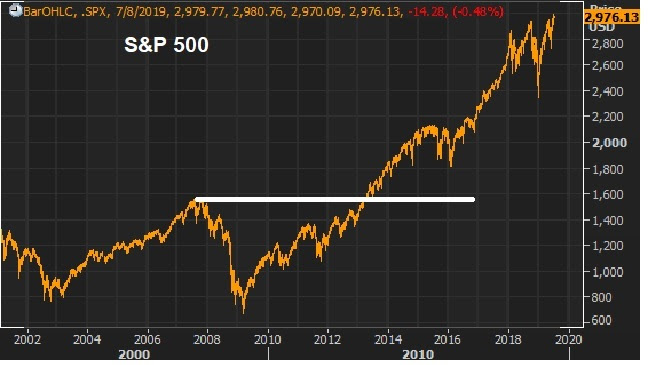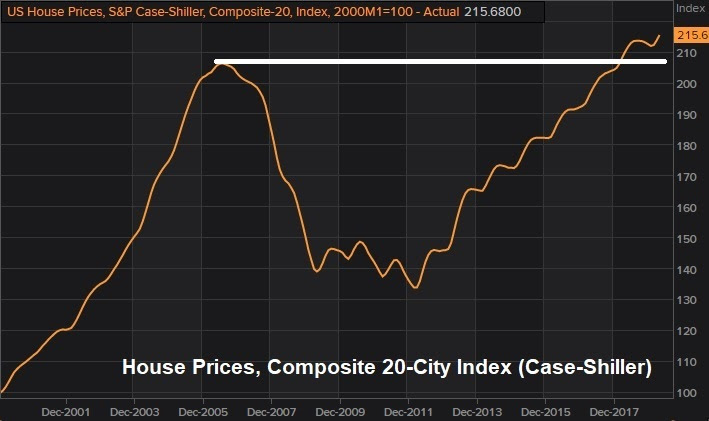|
July 8, 5:00 pm EST Following the quiet Independence Day holiday last week, today Wall Street begins to position for what will be a very important July. After a rate hiking cycle that has spanned from December 2015 to December 2018, the Fed is expected to cut rates on July 31–reversing course on it’s post-crisis monetary policy “normalization” program. Now, the view toward just how aggressive the rate cut will be, has swung to a more moderate stance in recent days, following Friday’s hot jobs number. But just in case we need more Fed speculation in the market heading into the end of the month, we’ll hear more posturing from Jay Powell (the Fed chair) three times this week. He has a prepared speech at the Boston Fed event tomorrow. And then he’s scheduled to give his semi-annual testimony to Congress on Wednesday and Thursday (along with Q&A to follow). We enter this week with stocks trading near 3,000 on the S&P — that’s 4.5x higher than the 2009 lows. That incorporates about seven years of zero-interest rate policy, $4 trillion of QE. But as you can see in the chart below, three-years of rate hikes have not derailed the stock market recovery. The S&P 500 is up more than 40% and sitting on record highs.
|
 |
|
What gives? While the Fed has tightened 225 basis points, market-determined interest rates haven’t followed. The benchmark 10-year yield stands just where it was when the Fed launched QE (i.e. a yield around 2%). That has continued to push people toward higher risk (relative to bonds) in search of return. And this soft market-determined interest rate environment has been a huge contributor to this next chart. |
 |
|
Mortgage rates have remained very low. And that has driven the continued housing market recovery (to new record highs)–a huge driver of the economic recovery. What has caused the decoupling of market-determined interest rates from Fed rates? Remember, while the Fed has been reversing emergency level policies, both Europe and Japan have continued to print money and buy assets (among them, U.S. Treasurys–which puts downward pressure on market interest rates). While the U.S. economy seems to have taken rate hikes in stride, the rest of the world hasn’t. And ultimately that has become the catalyst for a reversal of course for the Fed. If you haven’t signed up for my Billionaire’s Portfolio, join now — get your risk free access here. |
